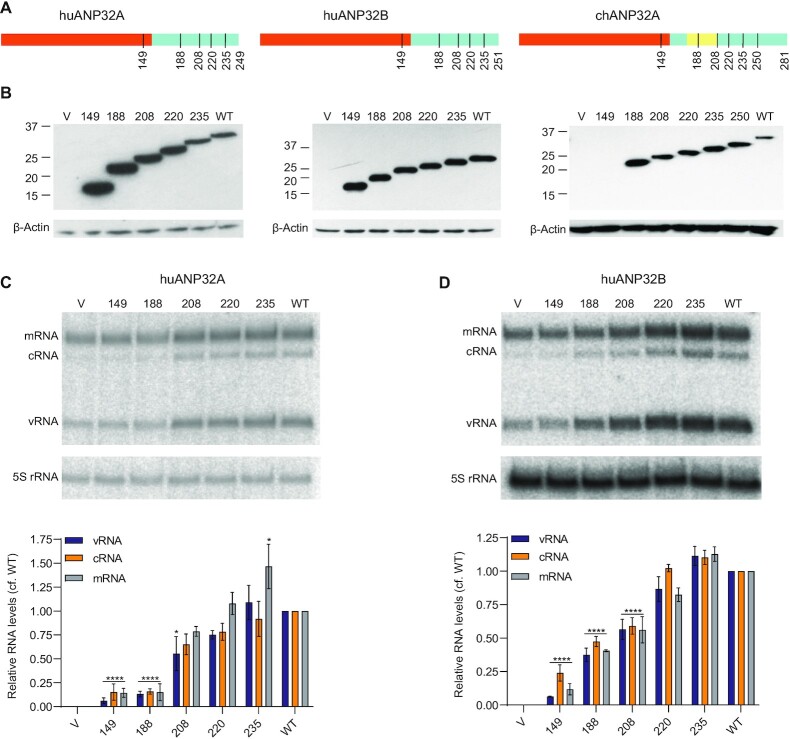Figure 1.
ANP32 LCAR is required for viral RNA accumulation during infection. (A) Schematic diagram of huANP32A, huANP32B, chANP32A and truncated mutants used in this study. Regions of LRR, LCAR, and the 33-amino-acid-insertion in chANP32A are coloured in red, blue, and yellow, respectively. The numbers under the schematics indicate the length of truncation mutants of ANP32 proteins. (B) Expression levels of wildtype (WT) or truncation mutants of ANP32 proteins in 293T-DKO cells. Note that the chANP32A-specific antibody does not recognize the 1–149 truncation mutant. Transfection of an empty vector (V) was used as a negative control. Molecular weight markers are indicated in kDa. (C, D) The effect of LCAR truncations on viral RNA synthesis during infection. 293T-DKO cells were transfected with plasmids to express the indicated huANP32A (C) or huANP32B (D) proteins. Twenty-four hours post-transfection cells were infected with influenza A/WSN/33 (H1N1) at an MOI of 5. Total RNA was isolated at 8 h post-infection and was analysed by primer extension assay. The quantitative results show the mean signal intensity (with the activity of vector subtracted) relative to that of the polymerase in the presence of wildtype ANP32 proteins from three independent experiments. Error bars represent the standard error of the mean (n = 3). Significance was assessed using Ordinary Two-way ANOVA and asterisks indicate a significant difference as follows: *P < 0.05; ****P < 0.0001.

